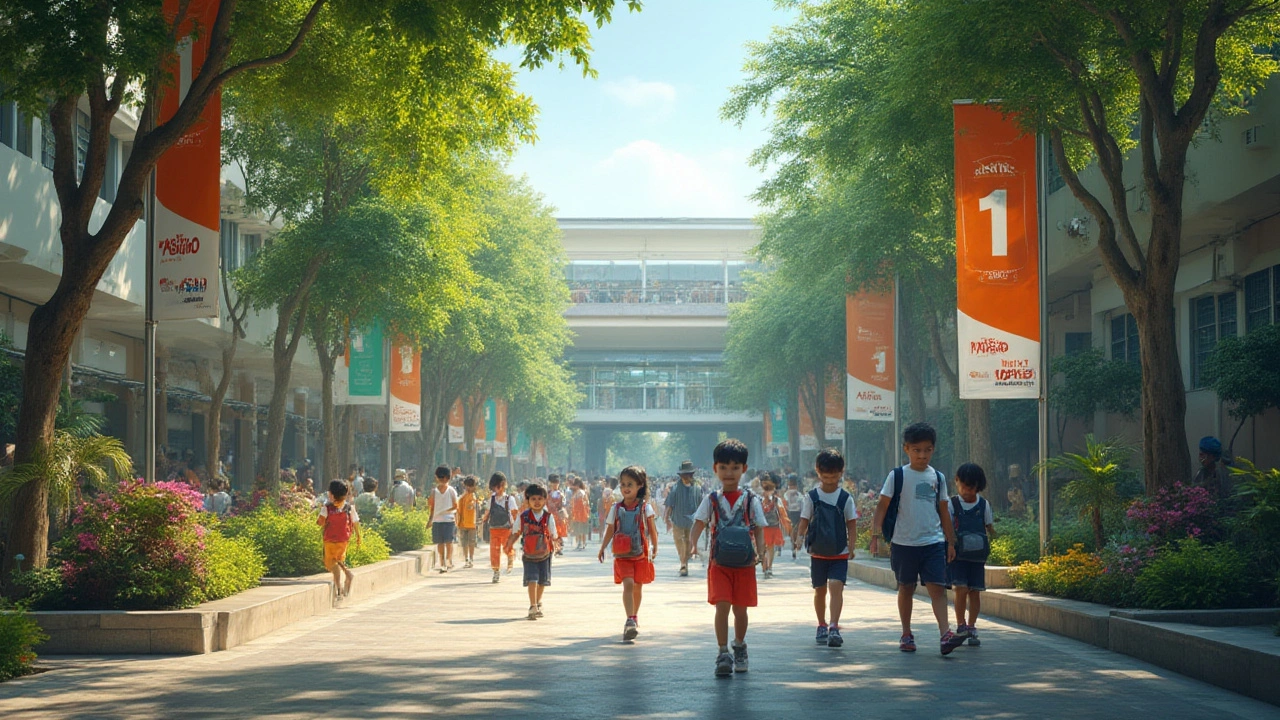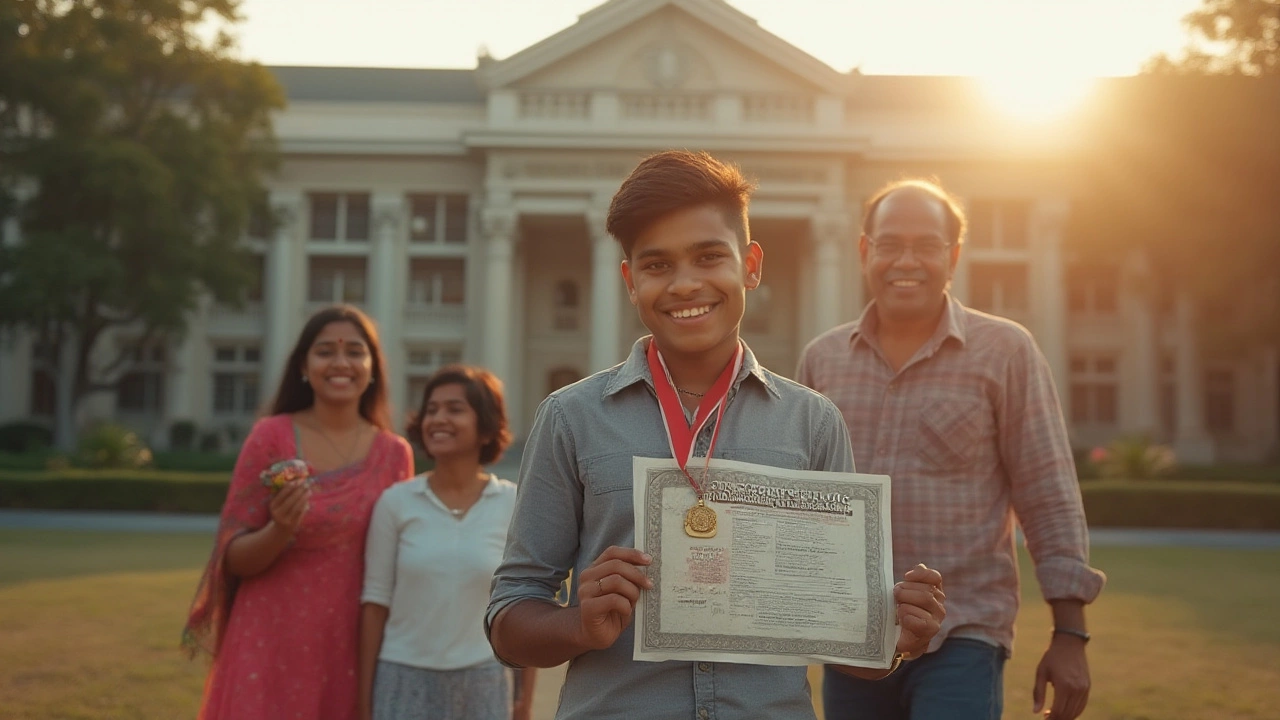
The scramble for the top spot among Indian schools is fiercer than ever, and parents aren’t hesitating to hop a dozen states just for a crack at that elusive gold standard of education. Some even joke that getting into India’s finest schools is as hard as getting into Harvard—except here you might need to be an all-rounder, speak at least three languages, and master the tabla too. But ask anyone living the stress of Indian admissions: is there really just one school deserving of the title “Best School in India”? Or is it a matter of perspective, slick marketing, or deeply hidden data? Let’s break down the latest facts, stats, and secret sauces that go into crowning India’s number one school in 2025.
What Makes a School Rank No. 1 in India?
Cracking the code behind what lands a school at the top is no less than solving the Da Vinci Code for many parents and students. First, let’s clear up a massive myth: there’s no universal, government-mandated single ranking for all schools in India. Instead, you get a mosaic of annual lists from organizations like EducationWorld, India Today, Times School Survey, and Outlook, each weighing different criteria—so numbers can change depending on which scoreboard you trust. That said, certain names dominate across almost every list—Delhi’s The Shri Ram School, Mumbai’s Dhirubhai Ambani International, and Bengaluru’s The Valley School pop up with clockwork regularity.
So how do these rankings work? Typically, a school’s performance depends on at least five major areas:
- Academic performance—measured through Board exam results, university placements, and specialty Olympiad medals.
- Infrastructure and resources—think world-class labs, technology access, and sprawling sports grounds rather than rickety benches and fans that only blow hot air.
- Faculty quality—institutions with teachers who hold advanced degrees and regularly do professional development score way higher. According to the 2024 EducationWorld survey, schools scoring above 95/100 in teacher training also led in student outcomes.
- Student development outside the classroom—co-curriculars, leadership activities, exchange programs, and creative arts are all a big deal now.
- Parental and industry perception—a school’s “brand value” often tips the scales. For instance, Dhirubhai Ambani International’s strong alumni network and global connections are a magnet for parents eyeing international universities.
But it’s not just about showy buildings or Board toppers. Most ranking agencies use a handpicked survey group of parents, alumni, teachers, and education experts who rate each school on things like stress management, teacher approachability, legacy, and even social equity practices. EducationWorld alone polled more than 15,000 respondents for its 2024-25 India School Rankings. That’s more voices, opinions, and personal experiences than you’d probably get even for an election exit poll. Once they crunch all this data, the result is a weighted average score, giving us the famous “rank 1.”
Here’s something quirky you probably didn’t know: The No. 1 spot isn’t always grabbed by the same school every year. While The Shri Ram School, Dhirubhai Ambani International School, and The Valley School have taken top honors repeatedly, Delhi’s Vasant Valley School, Heritage School, and SAI International from Bhubaneswar have all had their turn at the summit. In fact, in the 2024-25 EducationWorld India School Rankings, Dhirubhai Ambani International School (Mumbai) clinched the No. 1 urban day school spot for the sixth year running. But if you ask someone else, you’ll hear The Shri Ram School edges ahead because of its holistic, stress-free environment and consistent Board performance.
This leads us to the million-rupee question: Should you believe these lists at face value? Not entirely. While they make for great dinner table bragging rights, every kid’s needs are different—sometimes the perfect school isn’t the one with the gold-plated trophy, but the one that fits just right for your child’s needs. Still, rankings give a helpful head start if you’re new to the admissions circus.
| Ranking Agency | No. 1 School (2025) | Key Strength | Average Annual Fee (INR) |
|---|---|---|---|
| EducationWorld | Dhirubhai Ambani International School (Mumbai) | Academic Excellence, Global Curriculum | Rs 8-10 lakhs |
| India Today | The Shri Ram School (Delhi & Gurugram) | Holistic Education, Faculty Quality | Rs 4-6 lakhs |
| Outlook | The Valley School (Bangalore) | Liberal Atmosphere, Sports/Culture | Rs 2-4 lakhs |
The numbers tell a story: higher fees often come with the turf for the country’s top schools, but so do amenities you’re unlikely to find at regular schools. Still, hefty price tags don’t guarantee a place at the top—student support, campus culture, and academic flexibility are massive factors.

Spotlight: The No. 1 School Right Now
When the results for 2025 came out, Dhirubhai Ambani International School in Mumbai walked away with the thunder, topping most major lists as the top school in India. Founded in 2003 by Nita Ambani, this relatively young school has already built a jaw-dropping reputation—not just for its A-level scores, but a roster of alumni who score full scholarships at Ivy League institutions, ace international Olympiads, and star in Model United Nations conferences across the globe. DAIS, as it is affectionately known, is probably the only Indian school with a waiting list longer than most airlines’ frequent flyer programs. Admission is notoriously competitive. You’ll need solid grades, a showcase of talents, and a sprinkle of “X-factor” (think community service, social projects, or unique passions—coding, sports, you name it!).
Wonder how DAIS pulls all this off? The answer is a potent mix of resources: a low student-teacher ratio, mandatory weekly co-curricular activities, foreign language instruction, and a sprawling campus packed with smart classrooms, science parks, swimming pools, and even a planetarium. Their teachers are pulled from the best, with many having worked in international schools abroad. Even their cafeteria menu is kinda legendary—a far cry from undercooked samosas and watery chai. Plus, involvement of corporate mentorship programs and global partnerships (Stanford, MIT connections are not uncommon here) tip the scale further.
Let’s slice up the data even more:
- DAIS secured a whopping 98% average in the 2024 ICSE Boards (with 15 students scoring above 98.5%).
- More than 85% of its 2025 graduating class earned early acceptances from universities like Yale, Stanford, Oxford, and the NUS Singapore.
- Over 75% of DAIS students participate in Model United Nations, Robotics Competition, or Student Entrepreneurship cells.
- DAIS spends roughly Rs 28,000 per student on books, tech, and lab equipment every year, which is nearly double the national average for a private school.
- Student-run social impact projects are mandatory, and several have won international prizes for innovation in sustainability and public health.
What really sets DAIS apart, though, is its flexibility. Kids aren’t slotted into narrow academic tracks but are encouraged—or rather, challenged—to build well-rounded personalities. They run coding clubs, perform Shakespeare, debate at international levels, and work internships as early as Class IX. I kid you not, one DAIS student even got a patent for an AI-powered stethoscope last year!
Of course, DAIS isn’t perfect. The pressure to excel can get real, the competition is relentless, and not everyone gets to hold center stage. Fees are sky-high (almost Rs 10 lakhs/year including activity charges), so it’s not accessible for everyone. But for those who make it, the school promises a launchpad that’s hard to match.
TIPS: If you’re dream-hunting for DAIS—or any top rung school—start your prep early. Know the application deadlines (many close by September for next year!). Build a compelling personal profile for your child: community service, sports trophies, public speaking, or digital portfolios. Networking with current parents opens a surprising number of doors. And yes, interviews aren’t just for kids—parents, brush up on your communication skills because you’ll probably be grilled too.

Does the Best School Mean the Best Education for Every Child?
It’s tempting to think all your problems are solved if your child gets into the No. 1 school, but here’s some food for thought—does one size ever fit all in education? India is a patchwork of languages, cultures, and dreams. The “top” school for one child could be unremarkable or even daunting for another. Take sports prodigies, for example. Many of India’s Olympic hopefuls and cricket stars actually come from non-metro schools that invest heavily in specific infrastructure (think Bishop Cotton School in Shimla or Rishi Valley in Andhra which focus more on rural education or sports rather than a pure academic grind).
Stories about pressure and burnout aren’t rare at the top. Some students crack under quotas and expectations to excel at everything. That’s where schools like The Valley School (Bangalore), Rishi Valley (Chittoor), and Aurobindo International step in. These places score huge on quality of life, personal attention, and creativity over rote learning. According to a 2023 survey by The Hindu, over 60% of Indian parents said they’d consider picking a less “ranked” school if it meant less anxiety and more happiness for their kids. Sometimes, the loosely structured day with freedom to explore kills it way better than a regimented system focused on scoring the highest marks.
Now, flip the coin—what about kids trying to get into Ivy Leagues or the IITs? Elite eco-systems like DAIS, The Shri Ram School, or NPS Bangalore churn out beta-ready, interview-polished, all-rounders. Their alumni networks can help snap up dream internships and early admission. And, let’s be honest, employers and colleges gloss over resumes from the best-known brands more often than not.
Your decision really depends on what you want out of schooling: academic grind, real-world exposure, creative freedom, or a mix of everything? If you’re relocating for work (like many of us in Melbourne with a keen eye still on India), check expat forums, connect with alumni, and don’t obsess over single-point rankings. Focus on teacher quality, sports/art options, approach to stress, and—here’s a pro tip—talk to current students before making the leap!
Lastly, don’t rule out scholarships. Even the highest ranked schools in India have started rolling out merit and need-based support, especially as global competition rises. DAIS, for instance, has increased its scholarship budget by 20% in 2025 compared to five years ago. So, if affordability spooks you, check eligibility early—sometimes, paperwork is more than half the battle won!
